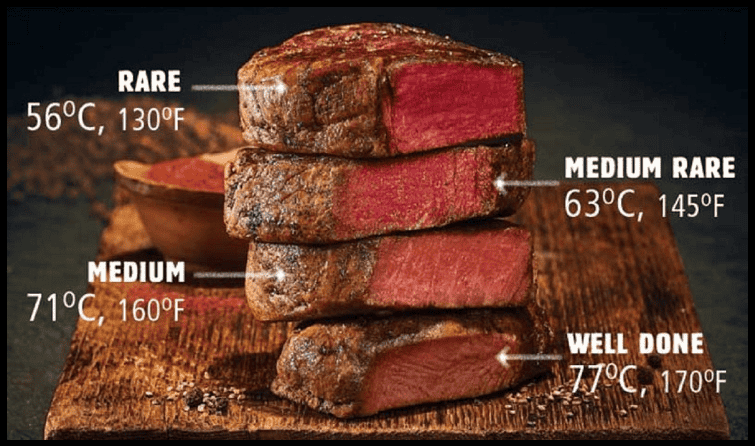Spanish Latte: The Creamy Delight of Coffee Lovers
If spanish latte you’re a coffee enthusiast or someone who just loves a good latte, chances are you’ve heard. This creamy, sweetened coffee drink has gained popularity in coffee shops around the world, but its origin story and how it differs from a regular latte may surprise you. Whether you’re just curious about the taste or planning to add it to your coffee routine, this article will walk you through everything you need to know about the Spanish latte—from its history to how to make it at home.
What is a Spanish Latte?

A Brief Introduction to the Spanish Latte
At first glance, the Spanish latte may seem like a regular latte, but there are key differences that set it apart. A traditional latte is simply a combination of espresso and steamed milk, while a brings a sweet twist by adding sugar or condensed milk. This sweet element is what makes the Spanish latte stand out in terms of flavor and texture.
The sweetness in a is not overpowering but adds enough richness to make it a comforting and indulgent coffee experience. This drink also typically has a higher milk-to-coffee ratio compared to other latte variations, making it creamier and more satisfying for those who enjoy a milk-forward coffee drink.
Origin of the Spanish Latte
Contrary to popular belief, the Spanish latte didn’t originate in Spain. While it’s commonly found in coffee shops throughout Spain and Latin America, its roots are somewhat of a mystery. Many believe the drink gained popularity in Spanish-speaking countries and evolved from local tastes that prefer their coffee with a sweet, rich flavor.
In places like Cuba, condensed milk has long been used to sweeten coffee, leading to variations like the “Café con Leche” or “Café Bombón.” The Spanish latte could have been influenced by these drinks but adapted with modern touches like steamed milk and espresso, making it a hybrid of classic flavors and modern coffee-making techniques.
The Difference Between Spanish Latte and Regular Latte
While both the Spanish latte and regular latte contain espresso and milk, the key difference lies in the level of sweetness and milk content. A regular latte focuses on the pure combination of coffee and milk, with little to no sweeteners added. On the other hand, the introduces an element of sweetness, often using sugar or condensed milk to achieve its unique taste.
Additionally, the milk-to-coffee ratio in a Spanish latte tends to be higher, giving it a creamier texture. This makes it a more indulgent option for those who prefer a smooth, rich coffee drink over the robust and bold flavors found in regular lattes.
Ingredients Needed for a Spanish Latte
Espresso: The Heart of the Drink
The first essential ingredient in a Spanish latte is a shot of espresso. Espresso forms the backbone of this drink, providing the rich and robust coffee flavor that balances out the sweetness of the milk. To get the best results, it’s recommended to use high-quality coffee beans. Whether you prefer a dark roast or something lighter, the espresso should pack enough flavor to hold its own against the creamy milk.
If you don’t have an espresso machine, don’t worry. You can substitute espresso with strong brewed coffee or a stovetop Moka pot to achieve a similar taste.
Milk: The Creamier, The Better
Milk is the second essential ingredient, and the type of milk you use can greatly affect the taste and texture of your Spanish latte. Whole milk is the most common choice, as it provides a rich, creamy texture that complements the coffee perfectly. However, you can use other types of milk like skim milk, almond milk, or oat milk for a lighter or dairy-free option. The key is to steam the milk to the perfect consistency, creating a velvety texture that enhances the overall experience.
The amount of milk used in a Spanish latte is typically more than a regular latte, making it an excellent option for those who enjoy creamier coffee beverages.
Sweeteners: Sugar vs. Condensed Milk
The sweet element of a Spanish latte is what sets it apart from other lattes. Most recipes call for sugar or sweetened condensed milk to achieve the desired sweetness. If you prefer a subtler sweetness, regular sugar works just fine, as it dissolves easily into the hot espresso. For those who enjoy a more decadent taste, sweetened condensed milk is the way to go. It not only adds sweetness but also increases the creaminess of the drink.
Some variations also use honey or flavored syrups, depending on personal preference. Regardless of which sweetener you choose, the goal is to find the perfect balance between the strong coffee and creamy milk.
How to Make a Spanish Latte at Home
Step 1: Prepare Your Espresso
To make a Spanish latte at home, the first step is to brew a strong shot of espresso. If you have an espresso machine, this step is straightforward—simply pull a shot of espresso using your favorite coffee beans. For those without an espresso machine, you can use a Moka pot, AeroPress, or even a French press with finely ground coffee to achieve a strong, concentrated brew.
Make sure the espresso is hot, as this will help dissolve the sugar or condensed milk in the next step.
Step 2: Sweeten the Espresso
Once your espresso is ready, it’s time to add the sweetener. If you’re using sugar, stir it directly into the hot espresso until it’s fully dissolved. If you’re using condensed milk, you’ll want to add about one to two tablespoons, depending on your desired sweetness level. Stir thoroughly to ensure the sweetener is evenly mixed.
Condensed milk not only sweetens the drink but also adds a creamy, rich texture that complements the espresso. Be careful not to overdo it, though, as too much can overpower the coffee flavor.
Step 3: Steam the Milk
The next step is to steam your milk. If you have a milk frother or a steam wand, heat the milk until it reaches a frothy consistency with small bubbles. The goal is to achieve a silky texture that’s not too foamy. Whole milk tends to froth the best, but you can use any milk or milk alternative depending on your preference.
If you don’t have a milk frother, you can heat the milk in a saucepan on the stove and whisk it vigorously until it becomes frothy. Alternatively, shaking the milk in a jar or using a hand blender can also create a frothy texture.
Step 4: Combine and Serve
Finally, pour the steamed milk over the sweetened espresso, leaving some frothy milk on top for a beautiful finish. The result should be a creamy, sweet latte with a smooth texture. For an extra touch, you can sprinkle cinnamon or cocoa powder on top for added flavor and presentation.
Now, sit back and enjoy your homemade Spanish latte!
Variations of the Spanish Latte
Iced Spanish Latte
One popular variation of the Spanish latte is the iced version. This drink is perfect for warm days when you crave a cold, refreshing coffee with a creamy texture. To make an iced follow the same steps as above, but instead of steaming the milk, simply pour it cold over the sweetened espresso. Add ice cubes to the glass, stir, and enjoy!
Some people like to use a combination of cold brew and sweetened condensed milk for an even more refreshing twist. Cold brew coffee has a smoother flavor compared to espresso, making it an excellent base for an iced Spanish latte.
Flavored Spanish Latte
For those who enjoy flavored lattes, you can easily customize your Spanish latte by adding syrups like vanilla, caramel, or hazelnut. Simply stir the syrup into the espresso along with the sugar or condensed milk before adding the steamed milk. The result is a flavored latte with the signature creaminess of a perfect for those who want a sweet, indulgent treat.
Some coffee shops even offer seasonal flavors, such as pumpkin spice or peppermint, which can be incorporated into your Spanish latte for a festive twist.
Dairy-Free Spanish Latte
If you’re lactose intolerant or prefer to avoid dairy, you can still enjoy a delicious Spanish latte by using non-dairy milk alternatives. Almond milk, oat milk, and soy milk are popular options that froth well and provide a creamy texture. For the sweetener, you can use dairy-free condensed milk, which is typically made from coconut milk, or opt for a simple syrup or sugar.
While the texture may differ slightly from a traditional the dairy-free version still offers a satisfying, creamy coffee experience.
Nutritional Information and Health Considerations
Calories and Macros
The calorie content of a Spanish latte depends on the type of milk and sweeteners used. A traditional Spanish latte made with whole milk and condensed milk can be quite calorie-dense, ranging from 200 to 300 calories per serving. This is due to the higher fat content in the milk and the added sugar from the condensed milk.
If you’re watching your calorie intake, you can reduce the calorie count by using skim milk or a plant-based alternative and opting for a sugar substitute instead of condensed milk.
Sugar Content
One of the main factors to consider when drinking a Spanish latte is its sugar content. Condensed milk is high in sugar, and if you’re adding extra sugar or flavored syrups, the drink can quickly become very sweet. For those monitoring their sugar intake, it’s important to adjust the sweeteners accordingly or use sugar-free alternatives.
Health Benefits of Coffee
Despite the higher calorie and sugar content, the Spanish latte does offer some health benefits, primarily from the coffee itself. Coffee is rich in antioxidants and has been shown to improve cognitive function, boost metabolism, and even reduce the risk of certain diseases like Parkinson’s and Alzheimer’s.
Drinking coffee in moderation can be part of a healthy diet, especially if you balance out the sweet and creamy elements with lower-calorie options.
How to Order a Spanish Latte at a Coffee Shop
Communicating Your Preferences
When ordering a Spanish latte at a coffee shop, it’s essential to communicate your preferences clearly. Since not all coffee shops have a on their menu, you may need to ask for a regular latte with added sweetened condensed milk or sugar. You can also request a specific type of milk, such as whole milk or a non-dairy alternative, to suit your taste and dietary preferences.
If you’re unsure whether the coffee shop offers condensed milk, it’s always a good idea to ask beforehand. Many specialty coffee shops are familiar with the Spanish latte and will be happy to make one for you.
Customizing Your Drink
One of the best things about the Spanish latte is its versatility. You can easily customize it to suit your tastes, whether that means adjusting the level of sweetness, choosing a different milk option, or adding flavored syrups. Don’t hesitate to ask for modifications when ordering at a coffee shop to get the perfect drink for your palate.
For an extra indulgence, you can also ask for whipped cream or a sprinkle of cinnamon on top, making your a true coffeehouse treat.
Spanish Latte in Popular Coffee Chains
While the Spanish latte is more commonly found in specialty coffee shops, it’s becoming increasingly popular in larger coffee chains. Some international chains, like Starbucks, may offer their own version of a though it might go by a different name. In these cases, the drink may still feature the key components of espresso, milk, and sweetness, but the preparation methods or ingredients may differ slightly.
If your favorite coffee chain doesn’t offer a Spanish latte, you can always order a regular latte and add your own touch of sweetened condensed milk at home for a similar experience.
The Cultural Significance of Coffee in Spain and Latin America
Coffee as a Social Ritual
In Spain and many Latin American countries, coffee is more than just a drink—it’s a social ritual. Coffee shops, or “cafeterías,” are common meeting places where people gather to chat, work, or simply enjoy a leisurely afternoon. The Spanish latte fits perfectly into this coffee culture, offering a drink that’s both rich and comforting.
Whether sipped in the morning with breakfast or enjoyed in the afternoon as a pick-me-up, the embodies the warmth and hospitality that coffee represents in these cultures.
Café con Leche vs. Spanish Latte
If you’ve ever traveled to Spain or Latin America, you may have noticed that “Café con Leche” is a popular coffee order. While it’s similar to a Spanish latte, there are a few key differences. Café con Leche is typically made with equal parts espresso and steamed milk, without any added sweetness. It’s a simpler, more traditional drink, often enjoyed as part of a typical Spanish breakfast with toast or pastries.
The on the other hand, offers a sweeter, creamier alternative for those who prefer their coffee with a little more indulgence.
Conclusion: Why You Should Try a Spanish Latte
In conclusion, the Spanish latte is a delightful coffee drink that brings together the rich flavor of espresso, the creamy texture of milk, and the indulgent sweetness of sugar or condensed milk. Whether you’re making one at home or ordering it at your favorite coffee shop, the offers a unique twist on the traditional latte that’s perfect for any time of day.
With its versatile ingredients and easy customization options, the Spanish latte can be tailored to suit your taste, making it a must-try for any coffee lover. So the next time you’re in the mood for something sweet, creamy, and comforting, give the a try—you won’t be disappointed!








Post Comment